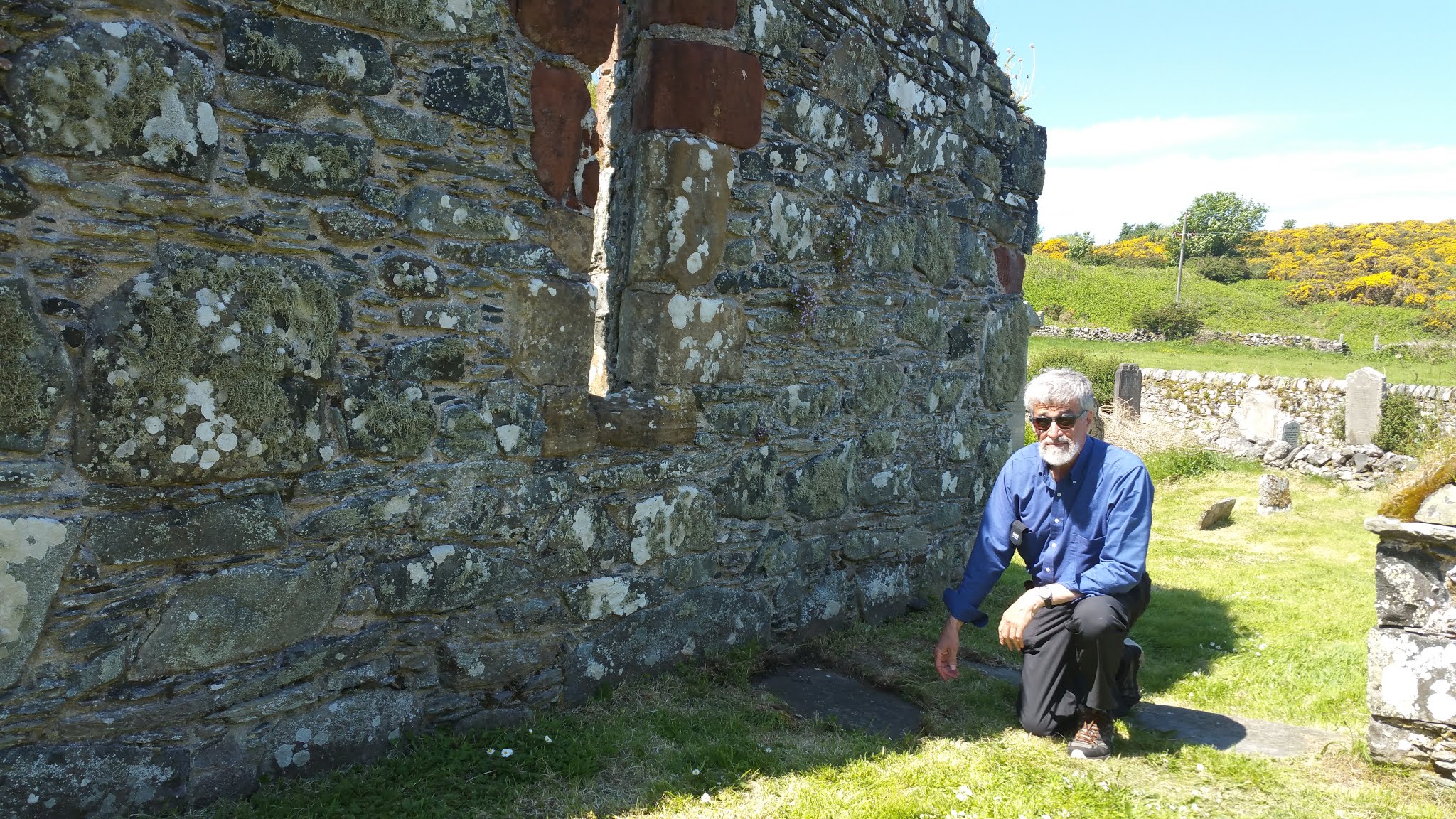Searching for ancestors leads to gravesite madness
Twice before, we had located it, the gravesite of John McGugan — Ground Zero, really, for a host of McGugans, McGougans, and McGoogans. We had made our way to the Kilchatten Cemetery on the tiny Scottish island of Gigha, three miles west off the coast of Kintyre.
The first time, roughly a decade ago, I had ignored a Keep Out sign as not pertaining to me, climbed over a makeshift fence surrounding the ruined church and, on deciphering the word “Gugan,” excitedly scraped away as much mud and overgrown grass as I could.
The second time, five or six years ago, conservators had cleaned up the mess and, as a sign says, “consolidated the church as a ruin.” With the help of a gardener, who knew the stone as the oldest legible marker in the cemetery, I was able to get a better look. But the day was overcast and the light was terrible and we failed to get a decent photo.
Third time out, yesterday, we had a devil of a time locating the stone. We remembered roughly where it was, both Sheena and I, but the grass — the flourishing grass is no friend of ours. Eventually, we found it. And so began our moment of gravesite madness, ripping and tearing at the grass, clearing away chunks and small strips of turf. Finally, we got the stone uncovered.
As you can see, it is very near the wall of the ruined church, which dates back to the 13th century. Archaeologists have determined that it was still in use in 1695, but was replaced by another in the early 1700s.
Nearby, there existed an old holy well dedicated to St. Cathan — but its position “has now been lost.” My madness, you see, is not without reason. This gravestone could easily disappear forever.
Variations on the McGugan name, one of the most common on Gigha, turn up on at least four legibly printed and much more impressive markers from the 19th and 20th centuries.
But on the Ground Zero stone, and this is what I love best about it, somebody scratched out the lettering by hand. Not only that, but the line-breaks are marvellously haphazard, dictated only by space considerations: “This is the bury// ing place of John Mc// Gugan tenant at Ardminish . . . ”
Ardminish is the name of the only village on Gigha. There is more. Sheena says that it might come clear if we could take a decent rubbing . . . but of course we carried no pencil.
Fortunately, a few written records do mention John McGugan. But about those, I shall leave you in suspense.
–>
